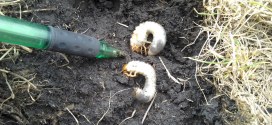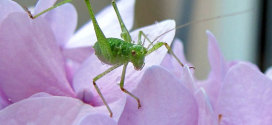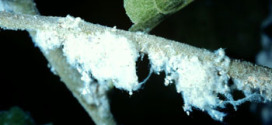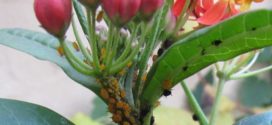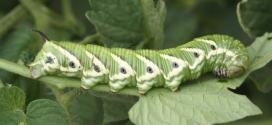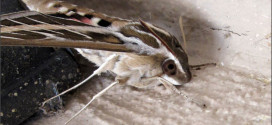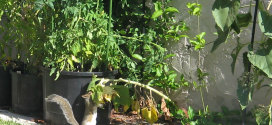If you use containers, you will find June bug grubs during the spring.
Read More »Pests
Grasshopper
tbd
Read More »Woolly Apple Aphids
Woolly apple aphids infest roots, trunks, limbs, shoots, and occasionally fruit of apple trees. The bodies of these bark-feeding aphids are completely covered by masses of white, wool-like, waxy materials. This aphid is found in colonies on the aerial portions of the tree and on roots during winter. The nymphs migrate up or down the trunk of infested trees during …
Read More »Oleander Aphids
Anyone who raises milkweed in an effort to attract Monarch butterflies is familiar with the soft-bodied, squishy orange insects that seemingly take over anything in the Asclepias family. Before we explore how to kill them, let’s take a look at the interesting life cycle of these ubiquitous, annoying insects, known as oleander aphids, milkweed aphids, or by their Latin name, …
Read More »Tomato Hornworm
The five-spotted hawkmoth (Manduca quinquemaculata) is a brown and gray hawk moth of the Sphingidae family. The caterpillar, often referred to as the tomato hornworm, can be a major pest in gardens.
Read More »Sphinx Moth
The White-lined sphinx (Hyles lineata), commonly known as the hummingbird moth, is a moth of the Sphingidae family. Its range extends from Central America, through the United States and into parts of Canada. The forewing is dark brown with a tan stripe which extends from the base to the apex. There are also white lines that cover the veins. The …
Read More »Western Gray Squirrel
The western gray squirrel was first described by George Ord in 1818 based on notes taken by Lewis and Clark at The Dalles in Wasco County, Oregon. The bad news is that in a forty-house area around my home, I am dinner central: fruit, then tomatoes then sunflowers. I have a lawn and about 50 pots perfect for squirrels to …
Read More »